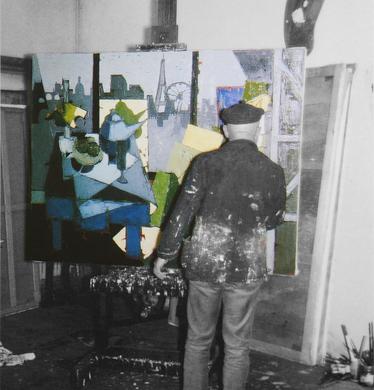Claude Venard (1913-1999) was a central figure of the post-war School of Paris and became internationally renowned during the 1950's for his bold heavily impastoed Post-Cubist paintings, built up through layer upon layer of pigment incorporating different resins and varnishes to an almost sculptural level. Described by the critic Waldemar George as “Figurative Abstraction” in 1954, to experience Venard's work is a rich visceral sensation.
In his twenties Venard had fled from the orthodoxy of the Académie des Beaux-Arts in Paris after only 48 hours. In 1938 he signed the avant-garde “Rupture” manifesto, and participated in the "Forces Nouvelles" group exhibitions. After the war (during which he enlisted and fought before ending up in a prison camp and subsequently escaping), he rejected the "miserablisme" of many of his fellow artists, and developed his own vibrant expressive technique which received great acclaim, and for which he is now famous.
Before his death during the final hours of the twentieth century, Claude Venard had become a highly celebrated artist having featured in contemporary art exhibitions around the world since 1935. His work is now represented in numerous museums of Modern Art worldwide.
As well as the artist’s impastoed works in the exhibition such as the monumental almost Pop-Cubist painting “Composition au Vase de Fleurs” from the early 60’s; and his marine series with vigorous sgrafitto typified in “La Baie” 1959 and “Le Dechargement du Bateau” 1953; included are some rare early pre-impasto works which reveal the artist’s distinct draughtsmanship that underlies his oeuvre, as in “Musique” c.1949 and “Jazz Parisien” c.1950.

